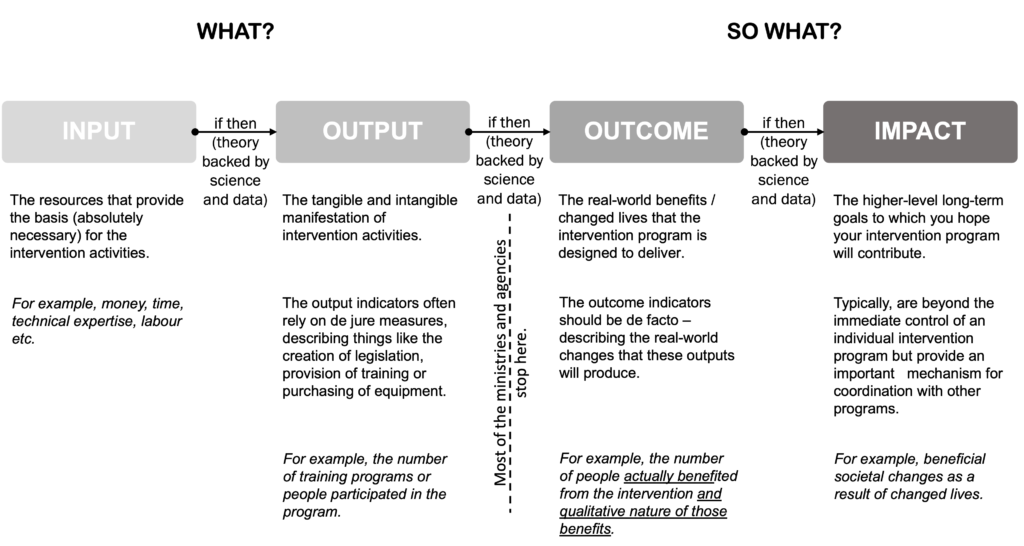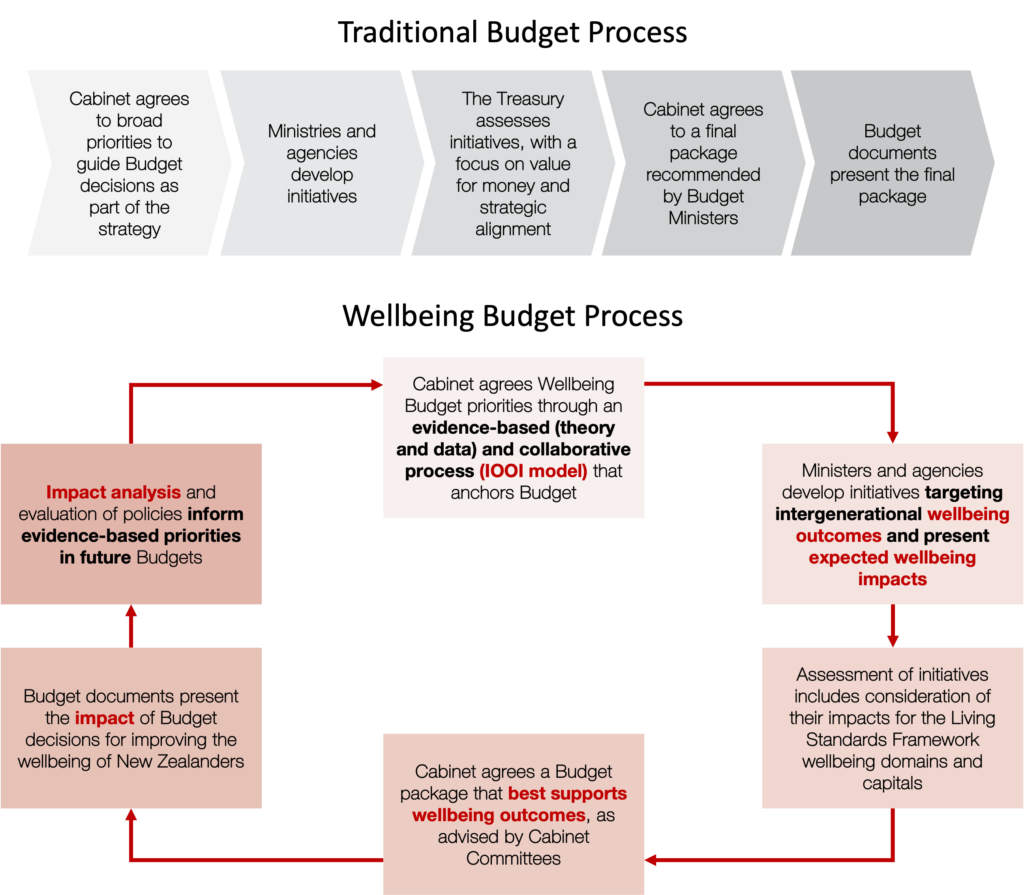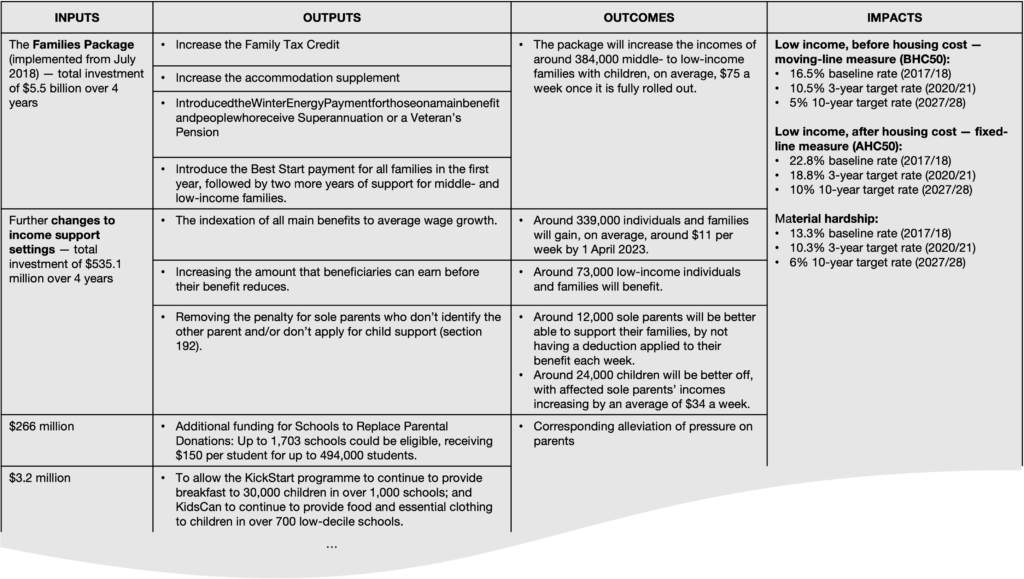
Published in The Star, Astro Awani, MYsinchew, Malaysiakini, and Sinar Daily, image by The Star.
On May 30, 2019, New Zealand surprised the world with the world’s first Wellbeing Budget. “But aren’t all national budgets supposed to revolve around the concept of people’s wellbeing?!”—we could rightfully exclaim. Our national plans, budgets and blueprints are also never short on using or even overusing this term.
Indeed, budget is the main reference point in agreeing on how scarce national resources are spent to preserve, develop, and enhance human lives and wellbeing in the context of intergenerational continuity. And indeed, New Zealand was not a pioneer to underscore the positioning of people’s wellbeing at the heart of national policymaking—France, Sweden, European Union, Organisation for Economic Co-operation and Development and others advanced similar ideas earlier. However, what really deserves the very full attention of all the nations, especially in the context of post-pandemic recovery, is the transformative approach New Zealand undertook to robustly link the concept of people’s wellbeing to the process of budgetary planning.
Although not explicitly stated, this approach clearly exemplifies the infusion of the Input-Output-Outcome-Impact (IOOI) framework that effectively enabled New Zealand’s policymakers across the board not only to think in terms of potential wellbeing impacts of their decisions but actually measure and track those impacts. After all, only what is measured gets attention and only what is tracked (against the key performance indicators) is managed, optimised, makes an impact, and cannot easily slip through leakages.
In the earlier article “Transforming Malaysia from third- to the first-world country” (October 21, 2021), EMIR Research has strongly emphasized the crucial importance of IOOI solid embedment in the Malaysian public sector as one of the surest and fastest ways to rebuild its national potential on every front. Now let us look at one great example of fusing the IOOI framework into the most strategic reference document of a country—the national budget.
In short, the IOOI framework is logical and robust reasoning (solely based on science and data) of the entire causal path from inputs (scarce resources / capitals) to outputs (tangible and intangible manifestation of intervention activities) to outcomes (real-world benefits / changed lives) and finally to impacts (higher-level intergenerational goals, if we speak in the context of a nation). Importantly, each level comes with a set of metrics to track the progress of transforming inputs into outcomes and impacts (Figure 1).
Another diagram (Figure 2) explains the essence of budget process transformation implemented by the New Zealand government.


In this diagram, what immediately catches the eye is the inclusion of cyclicality or some form of a feedback loop (through impact analysis), which is simply essential to effective management and is nothing new but the standard decision-making cycle model—a fundamental managerial concept.
However, ridiculously often, the governments that follow the “traditional budget process” completely ignore this fundamental managerial concept. Under the “traditional budget process”, the scarce and precious resources are debated thoroughly (this is in the best-case scenario still), committed, pumped in, and then there is a full stop right there!
But how about the assessment of the outcomes of the budgeted measures? How about tracking the intergenerational impacts? Well, maybe under the “traditional budget process”, the government sees no need in monitoring outcomes and impacts because, again, under the “traditional budget process”, they never plan for those in the first place.
In contrast, the New Zealand wellbeing budget approach powerfully combines a fundamental cyclical decision-making process model (with its crucial evaluation step) and the IOOI framework (refer to Figures 2 again).
The fusion of the IOOI framework into the decision-making cycle forces policymakers to show us based on science and data why they expect outcomes and impacts given the inputs and outputs they commit. And if measured and tracked, those outcomes become a rich source of data for the next round of the budget process (refer to Figure 2 again).
This approach is the only way to instil sensibility, continuity, and cohesion in national policymaking. This is also the only way to save many resources lost annually due to corrupt practices.
The New Zealand government has stopped looking at the various aspects of citizens’ lives, such as health, education, income level etc., in isolation and started looking through the lens of data intelligence at the relationships between those domains of life. This is crucial to understand the relationships between inputs (money spent), outputs (interventions), outcomes and intergenerational impacts and also break silos between various government ministries and agencies.
For example, New Zealand longitudinal data analysis has strongly indicated that children who grow up in poverty when they come out of poverty later in their lives are more likely to have negative health impacts. Therefore now the government knows where to focus their efforts to make the most intergenerational impact on their citizens’ health.
And now, the minister of health might work very closely with the minister of social development to look at more data jointly to design the best interventions that will make a difference few years down the line. The results of their evidence-based collaborative work translate into budgeted interventions with a detailed breakdown of how many lives are expected to be impacted and how (all detailed in the Wellbeing Budget document). Needless to say that all of those come with specific targets for outcomes and impact short-term, medium-term and long-term (Figure 3). New Zealand Treasure and Statistics New Zealand have developed measures and put them together in the Living Standards Framework to track the expected outcomes and impacts.

Note that with this scrupulous IOOI planning (Figure 3) already in 2019/20 (the first year of Wellbeing budget and also first pandemic year), New Zealand was well on the way to achieving the targeted impacts: AHC50 – 18.4% (4.4 percentage points (ppt) reduction), BHC – 13.8% (2.7 ppt reduction) and material hardship – 11.3% (2 ppt reduction).
In contrast to this, unfortunately, Malaysia budget is mostly the epitome of the “traditional budget process”.
For example, Covid-19 led to a large number of orphans. Children are the nation’s future, and how we handle this problem now will undoubtedly have an intergenerational impact on all of us. But, unfortunately, the only thing that our budget states: “Government will provide RM25 million to Yayasan Keluarga Malaysia to lead efforts in protecting the welfare, education and future of these orphans” (p 8. Budget Speech 2022, Keluarga Malaysia, Makmur Sejahtera) and full stop there.
Notably, just a few paras below on the same page in the same document we read: “The Government would like to urge all parties, including NGOs, local communities, local leaders and even the corporate sector to play a role in ensuring the welfare of these children continue to be safeguarded“.
Isn’t it too often in this country it seems to be somebody else’s job and not that of policymakers to make an impact?
Doesn’t it sound familiar—pump money in, no specifics, no targeted outcomes and impacts, just full stop there? But have not we seen this already, Malaysians, how humongous funds can be created and budgeted that claim to help orphans or other causes with no clear and transparent expected outcomes and impacts? And then these funds get misappropriated.
Budgeting for “flood preparedness” is another sad example in Malaysia budget 2022: “In facing the upcoming flood season during the North East monsoon, the preparedness of the National Disaster Management Agency will be critical. For 2022, RM100 million will be provided to, amongst others, reduce the burden of flood via the distribution of food kits.” (p 32).
Where are the specifics that can make an impact? Budgeting for handouts is not “flood preparedness”. Where is the solid plan to eliminate the problem for generations to come?
Given the dire state of our nation, we need a solid framework to keep our public servants doing their job and hold them responsible for it. We must imbed the IOOI approach into our budget and cascade it down the reporting line through all the agencies and ministries. Clearly Malaysia and Malaysians deserve better than BS22 (aptly abbreviated pdf file name for Malaysia Budget Speech 2022).
If Malaysia Budget document claims to be based on Malaysian 12 Plan then it has to show this clear linkage which is only possible through IOOI framework.
The absence of such a basic and essential approach to date explains why we are so poor at implementing and maintaining national policies and plans and are always short of our targets.At EMIR Research, we would like to emphasise again how crucial implementing the IOOI approach is to our nation’s very survival at the current junction. Only leaders who are genuinely interested in rebuilding Malaysia from ruins would prioritise and champion IOOI implementation at various echelons of public service. In contrast, those interested in preserving leakages, loopholes and mediocracy in decision-making would ignore, postpone, or outright oppose it. We, the rakyat, have the right to demand this!
Rais Hussin and Margarita Peredaryenko are part of the research team of EMIR Research, an independent think tank focused on strategic policy recommendations based on rigorous research.

